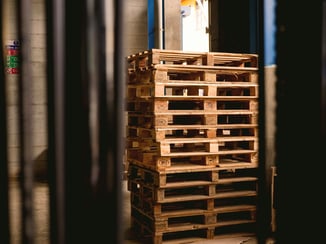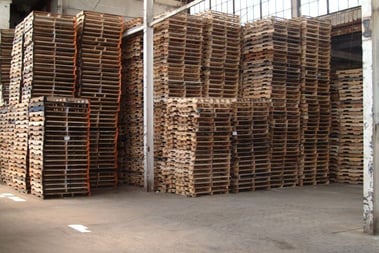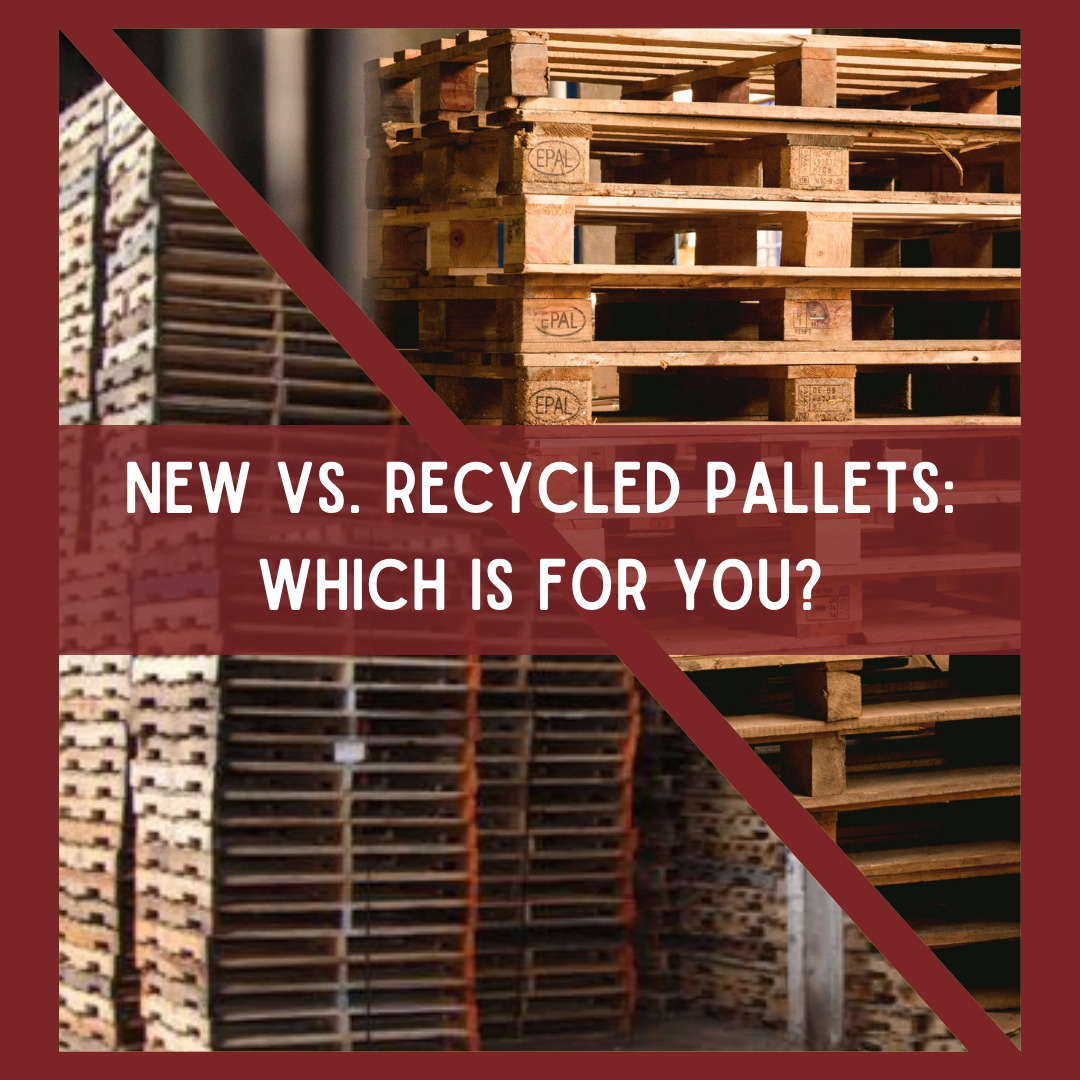Millwood is one of the largest providers of recycled wood pallets and pallet recycling services in the country and provides new and used pallets, along with a variety of other products, to our customers.
Our teams sort over 45 million used pallets each year and produce about 16 million new and recycled hardwood, softwood and composite material pallets every year.
|
Table of Contents |
What to Consider: Should I Buy New or Used?
There are various factors to consider when choosing between new and used pallets such as cost, quality and durability, supply chain efficiency and hygiene or safety standard.
A new pallet may be a better option if you are looking for something that is in pristine condition, can be custom designed and is durable to heavy loads due to not being used for previous shipments.
As a result of the high quality and structure of a new pallet, they tend to be more expensive. 

On the contrary, used pallets are generally more worn down with signs of wear, such as scuffs, scratches or minor damage because of previous shipping or storage operations.
However, used pallets can hold up to 2,000 lbs. depending on their grade and can sometimes be as sturdy as new pallets. Additionally, recycled pallets are often more cost-effective as they have already been in transit and may not be in a flawless condition.
When choosing between new and used pallets, it is important to consider factors such as cost, load requirements and intended use to ensure the choice aligns with your budget and operational needs.
Expenses
The price differs between a new and used pallet normally because of its quality. A used pallet tends to be more cost effective because of its previous use in the supply chain.
Used pallets typically have a lower upfront cost compared to new pallets, providing cost savings for businesses, especially those with a specific budget.
While new pallets tend to be more expensive, other factors such as design and other customizations are why you might think about purchasing new.
For example, customers are charged with additional fees when they choose unique features such as size, load capacity, deck layout, branding, labeling and special treatments. The price varies between a new and used pallet, but it all depends on the customer’s needs and how much they are willing to pay.
Quality & Durability
New pallets are generally more durable and have a longer lifespan compared to recycled pallets. They are less likely to fail under heavy loads, providing greater reliability and safety in material handling operations.
However, recycled pallets are not far behind when it comes to durability. While used pallets may have undergone wear and tear from previous use, they can still be helpful and functional depending on their condition and maintenance history.
Frequent inspection, repair, and refurbishment can help extend the use of recycled pallets and ensure their continued durability in supply chain operations.
Supply Chain Efficiency
Speaking of supply chain, new pallets can be customized to optimize supply chain efficiency, such as incorporating features for easier handling, stacking or racking. Customization options allow businesses to tailor pallets to their specific requirements, maximizing efficiency in material handling and storage processes.
 These cost savings can contribute to overall supply chain efficiency by reducing operational expenses without compromising performance. Choosing a used pallet can have environmental benefits by promoting the reuse and recycling of materials, reducing waste and conserving natural resources.
These cost savings can contribute to overall supply chain efficiency by reducing operational expenses without compromising performance. Choosing a used pallet can have environmental benefits by promoting the reuse and recycling of materials, reducing waste and conserving natural resources. This aligns with sustainable supply chain practices and corporate social responsibility initiatives, enhancing the overall efficiency and resilience of the supply chain. When it comes to supply chain efficiency, new and used pallets play a role, but each option has its own implications.
Hygiene/Safety Standards
New pallets are typically manufactured in controlled environments using clean and sanitized materials, making sure that they meet hygiene standards for use in popular industries, including food, pharmaceuticals and healthcare. They are free from contaminants, residues or debris that may pose a risk to product safety or integrity.
On the other hand, it can be challenging to keep up with the hygiene and safety of used pallets as their condition may not always be visible during inspection. Businesses may need to implement rigorous inspection, cleaning, and quality control measures to mitigate risks and ensure compliance with hygiene standards.
While new pallets generally offer higher levels of hygiene and safety assurance compared to used pallets, businesses can still use used pallets effectively by implementing the proper care and attention to them.
At Millwood, our mission is that all who come in contact would clearly see the love of Jesus Christ. It is put to practice by our entire team, including our sales managers across the United States, who will come alongside you to determine what option is best for you.
Contact us today for your free quote!






